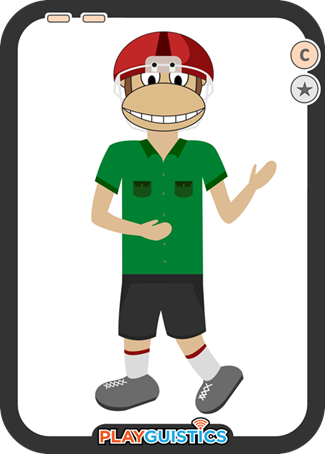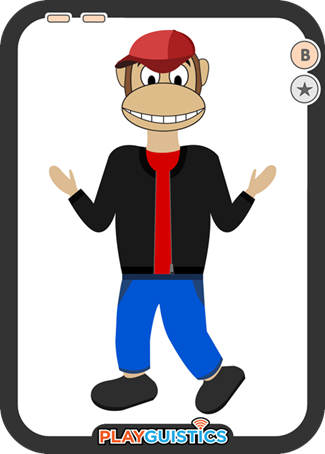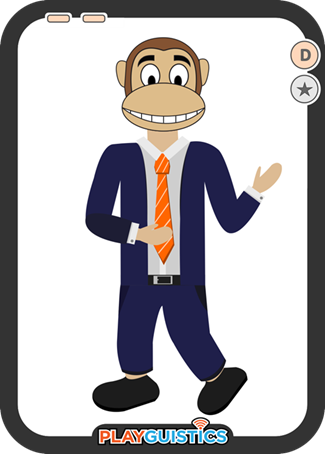About This Activity
|
Overview Clothing Monkey Cards is a simple game suitable for beginners that will allow for fun, repeated practice of common color and clothing vocabulary. Students can play this game after memorizing as few as ___ vocabulary words. Currently, 4 different sets of 18 cards are available for this game. As a deduction card game, players need to use their verbal skills to deduce which of the 18 cards laid out in front of them matches the "secret card" in their activity partner's possession. |
|
|||
|
Monkey with a helmet,
|
Monkey with a hat,
|
Monkey with a belt,
|
|
How To Play Materials: Two identical sets of 18 Clothing (Monkey) Cards are needed for each pair of two participants. This means two sets of Set A, two sets of Set B, two sets of Set C, etc. Time / Game Round: 1-3 minutes
For more detailed instructions for how to print, prepare, and introduce card-based deduction games like this one, click the blue button below. |
|
|||
Printing & Preparation Instructions
Words to Learn Before Playing
The Core Vocabulary Words listed below are all words that students should learn BEFORE playing this game. Students will only need to learn the words listed for a specific set of cards to play this game with that set of cards.
| Core Vocabulary Words Used in Activity | |||||||||
| Card Set A (18 Cards) | blue, boots, green, hat, helmet, monkey, pants, pink, pencil, red, shoes, skirt, vest | ||||||||
| Card Set B (18 Cards) | blue, boots, brown, gift, gloves, green, hat, jacket, monkey, orange, pants, pink, red, shirt, shoes, skirt, white, yellow, | ||||||||
| Card Set C (18 Cards) | 1, 2, belt, big, box, brown, green, happy, hat, jacket, mad, monkey, pants, pencil, pocket, red, running-shoes, shirt, shorts, small, socks | ||||||||
| Card Set D (18 Cards) | 1, 2, belt, black, blue, brown, coat, green, happy, hat, jeans, mad, orange, pants, pocket, purple, red, running-shoes, shirt, shorts, socks, suit, tie, white, yellow | ||||||||
Important Notes:
- Currently, three different card sets for Clothing (Monkey) Cards are available. For this game, each list of Core Vocabulary Words is only for one set and students don't need to learn the words from any previous sets to use that set.
For example, students don't need to know the words from Set A to be able to play the game with Set B. - The sets are not arranged in order of difficulty. Rather, each set offers a different assortment of vocabulary words. Set A and Set B are complete different, but Set C has some overlap with both Set A and Set B.
- It's entirely possible (and even recommended, once your students understand the game) to combine more than one set of cards together to create a more varied and interesting card deck.
Words to Learn While Playing
The following words will be used to the play this game (with every available set of cards). However, these words don't need to be pre-taught. These words can and should be learned WHILE playing the game.
| Vocabulary Best Learned In Context | |||||||||
| Used With All Sets | a/an, card, does, doesn't, have, how, is, isn't, it, many, no, the, this, wearing, yes, you, your | ||||||||
Sentence Patterns to Use While Playing
The following sentences and sentence patterns are recommended for use while playing this game. The best way to teach these sentences, is to use them in context while introducing the game and demonstrating how to play it.
| Standard Sentences and Sentence Patterns |
| Is the monkey wearing (a) _________________? |
| Yes, the monkey is. / No, the monkey isn't. |
| Does the monkey have (a) _________________? |
| Yes, the monkey does. / No, the monkey doesn't. |
| How many _________________ does the monkey have? |
| The monkey has ____ _________________. |
| Is this your card? |
| Yes, it is. / No, it isn't. |




